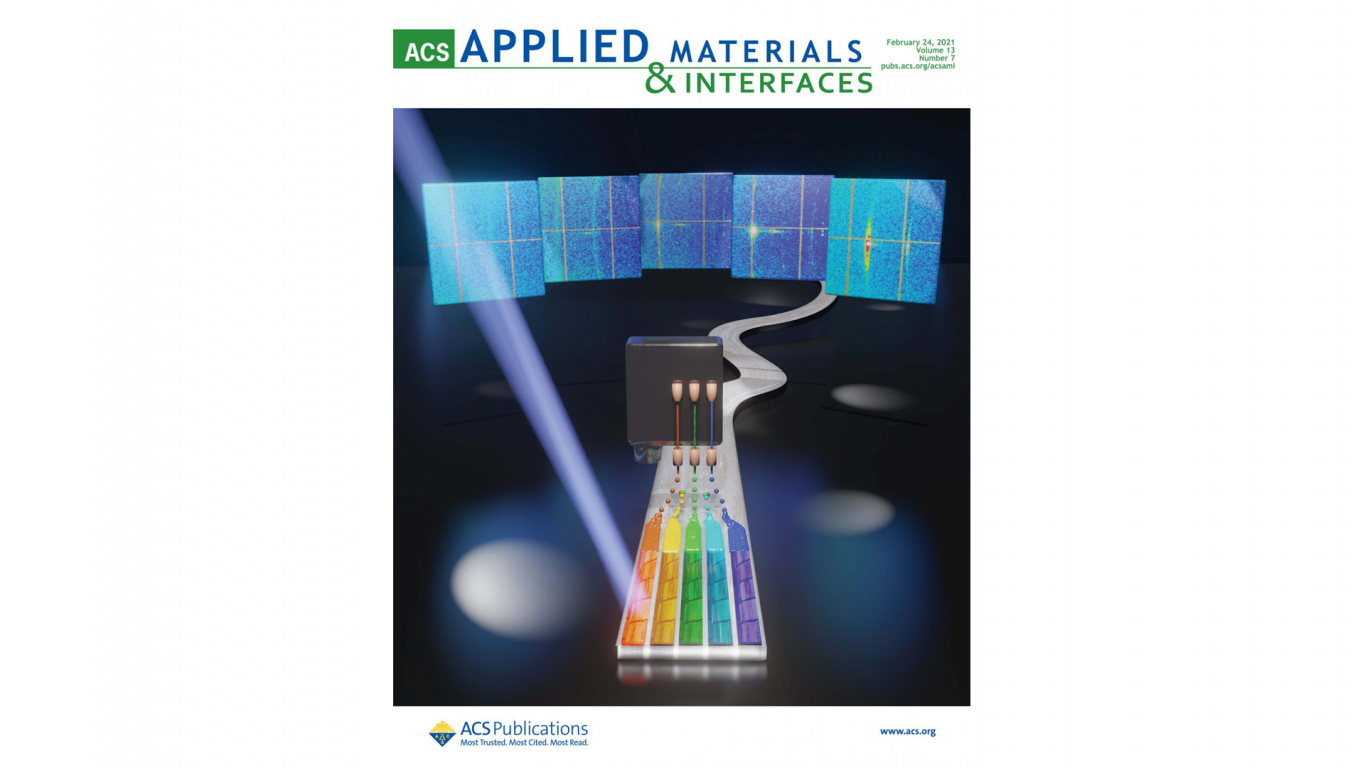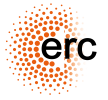
New Cover in ACS Applied Materials & Interfaces on combinatorial screening of superconductors
The journal ACS Applied Materials & Interfaces published the cover of the article “Combinatorial Screening of Cuprate Superconductors by Drop-On-Demand Inkjet Printing”.
The cover shows the combinatorial chemistry approach to prepare long superconducting tapes. This exemplifies the long road ahead to obtain cost-effective superconducting materials, but also the possibilities that combinatorial chemistry and high-throughput experimentation can provide to speed up the discovery of new materials and their optimization.
In the study, the superconducting tapes have been prepared using the drop-on-demand inkjet printing technique, which allows “the fabrication of complex-shaped samples suitable for highthroughput measurement procedures and also achieves locally uniform and graded compositions”. The goal it to find the optimal processing conditions and understand the growth process of the superconducting tapes, to find the optimal growth rates and functional properties of these materials.
The cover was designed by Albert Queraltó, first author of the article and Postdoctoral researcher at our group:
“This was my first cover, so I was very excited that the article offered us this opportunity, since it shows all the effort put behind the article by all the contributors. It is also a great opportunity to promote our combinatorial chemistry approach and I hope that in the future more possibilities like this are available. I have to thank my colleague Juri Banchewski (former PhD researcher at the SUMAN group), which had a large contribution in defining the idea of how to show our experiments in an illustration. Making the illustration itself was indeed difficult since I had to figure out how to put everything together, but it was worth it.”
Abstract:
Combinatorial and high-throughput experimentation (HTE) is achieving more relevance in material design, representing a turning point in the process of accelerated discovery, development, and optimization of materials based on data-driven approaches. The versatility of drop-on-demand inkjet printing (IJP) allows performing combinatorial studies through fabrication of compositionally graded materials with high spatial precision, here by mixing superconducting REBCO precursor solutions with different rare earth (RE) elements.
The homogeneity of combinatorial Y1–xGdxBa2Cu3O7 samples was designed with computational methods and confirmed by energy-dispersive X-ray spectroscopy (EDX) and high-resolution X-ray diffraction (XRD). We reveal the advantages of this strategy in the optimization of the epitaxial growth of high-temperature REBCO superconducting films using the novel transient liquid-assisted growth method (TLAG). Advanced characterization methods, such as in situ synchrotron growth experiments, are tailored to suit the combinatorial approach and demonstrated to be essential for HTE schemes. The experimental strategy presented is key for the attainment of large datasets for the implementation of machine learning backed material design frameworks.
Find the article here:
Combinatorial Screening of Cuprate Superconductors by Drop-On-Demand Inkjet Printing
Albert Queraltó, Juri Banchewski, Adrià Pacheco, Kapil Gupta, Lavinia Saltarelli, Diana Garcia, Núria Alcalde, Cristian Mocuta, Susagna Ricart, Flavio Pino, Xavier Obradors, Teresa Puig
ACS Appl. Mater. Interfaces 2021, 13, 7, 9101–911
doi: 10.1021/acsami.0c18014

